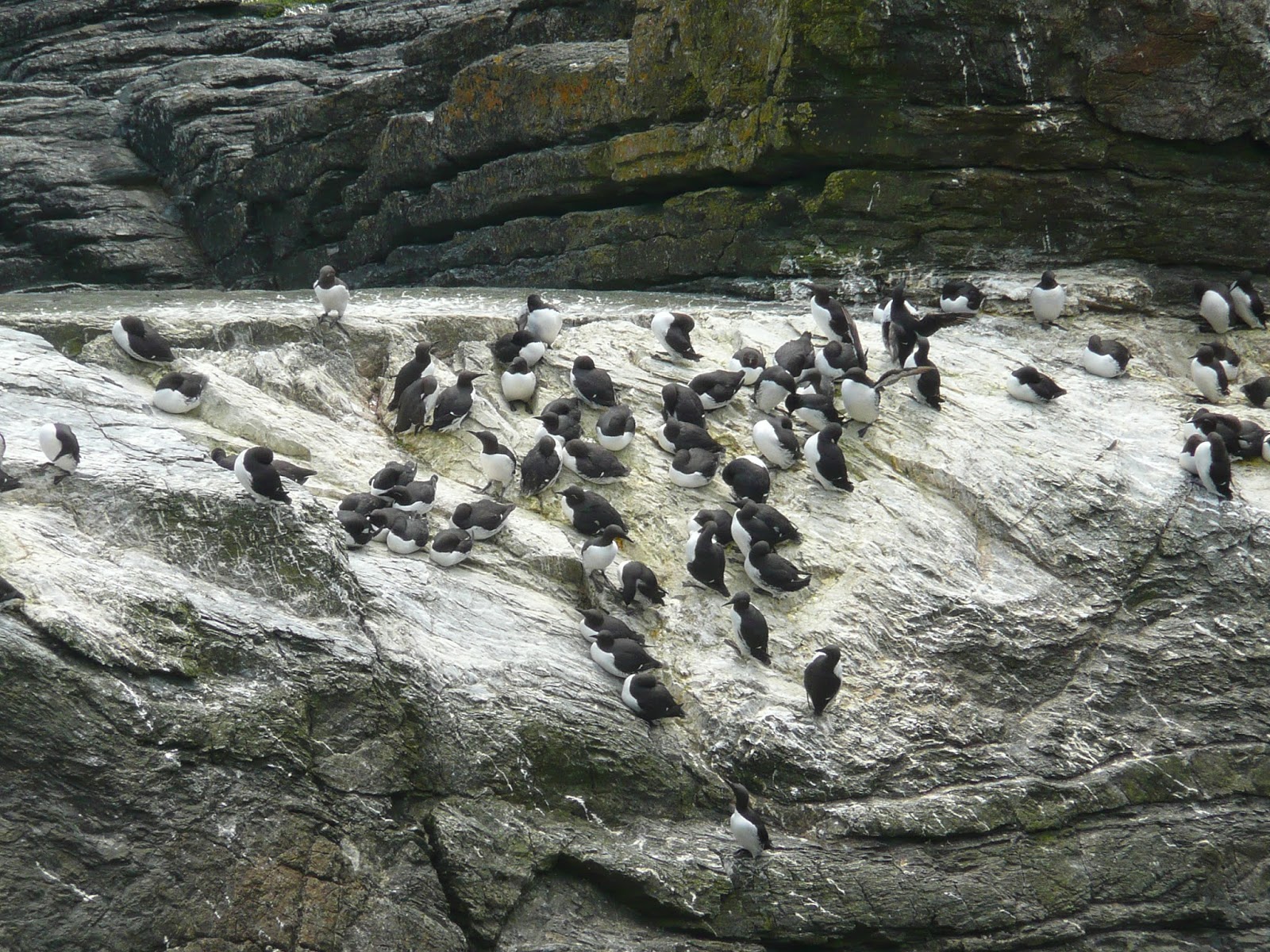This is the first post in what I hope will be a few...unlike my last trip when my computer ate all my photos.
Our first couple of days were taken up with family stuff....emergencies and the like...but all is good. So I will start with Monday.
My brother and I headed to Sumburgh Head, which is right on the southern tip of Shetland and a RSPB Nature Reserve. We went with the hope of spying puffins and whilst we did see some flying in and out of their burrows we didn't get any close up sightings.
A new visitor centre has been developed at Sumburgh Head and it opened to the public at the beginning of May - there's lots of information about the birds, a marine life centre, the history of the lighthouse etc. The lighthouse is one of the many lighthouses around Scotland designed by the Stevenson family (one of their other famous sons was the author, Robert Louis Stevenson, who didn't follow into the family business).
Robert Stevenson (senior) designed 15 of the key lighthouses around Scotland during a 50-year career. Many are characterised by the yellow paint that you see on the Sumburgh Lighthouse. His most famous lighthouse is the Bell Rock Lighthouse, off the coast of the River Tay.
So whilst we didn't see puffins we did see lots of black gulliemots - or tysties as they are called in the Shetland dialect.
After Sumburgh Head we went to Jarlshof, one of the most significant archaeological sites in the UK. Located on the edge of the sea, the site was home to a medieval merchant's house, until one night during a storm, the edge of the cliff was washed away and a prehistoric village appeared - the site is actually home to archaeology from the Bronze Age, the Iron Age, the Vikings, the Picts and the middle ages. The site includes late neolithic houses, oval shaped Bronze Age houses, Iron Age Wheelhouses, Viking Long Houses and medieval farmsteads.
The neolithic homes contain distinct rooms and many still have the quernstones where they ground corn and the remains of a Bronze-age smithy.
The Iron Age wheelhouse (so called because the roof was supported by wooden arms like the spokes of a wheel) is amongst the most intact in the world, and you can wander around its walls and through its passages. Next to the roundhouses was an Iron Age Broch - a dry stone construction, some of the most sophisticated ever built. No-one is quite sure what the brochs were built for - defence, status....
The site was then home to Norse settlers, who constructed long houses which it is believed were inhabited from the 9th to the 14th centuries.
Next stop was the beach that you can see in the pictures above....if it had been warmer, it could easily have been mistaken for a Caribbean hideaway - white sand and turquoise waters. Don't be fooled by the blue sky - it was cold!
Then I made my brother stop at Betty Mouat's Bod so I could get my picture taken. The knitters amongst you might know who Betty Mouat was, since Kate Davies created a pattern named after her. Check out Kate's blog for the patterns.
Betty Mouat was a 59-year old Shetlander, who on the 30th of January 1886 sailed from Grutness, near her home 24 miles south of Lerwick. She sought passage to Lerwick to see the doctor and to sell some of the fine knitwear she and other ladies in the village had created. The journey was supposed to take 2 to 3 hours, but a storm arose and the crew fell overboard and Betty Mouat found herself alone in the storm. Searches were called off on the 1st of February and the ship and Betty were feared lost. The ship drifted across the North Sea and on the 6th of February struck land on the island of Lepsoy off the coast of Norway. Following her adventure she arrived back in Shetland on the 16th of March......and lived a further 30 years.
We drove for a while to find the perfect picnic spot. Which we found en route to St Ninian's Isle.
Perfect sunshine, strange rock formations and sheep! What more could a girl ask for.
St Ninian's Isle is connected to the mainland by the largest, most active sand tombolo in the UK. A tombolo is a deposition landform which sees an island connected to the mainland by a narrow spit of land. As the sea comes round the island it creates 2 beaches, sweeping sediment together from both sides.
The tombolo from the mainland.
The tombolo from the island.
Me on the island....
There is an old church on the island, and in 1958 a local schoolboy discovered what has become known as the St Ninian's Isle Treasure under a cross-marked slab. The treasure dates from 800BC and is the finest examples of silver metalwork from Scotland during the period.
Sunbathing Scottish style on the tombolo - note the hat, coat and gloves.















1 comment:
Hahaha -- you are too funny! Scottish style sunbathing is my favorite -- no chance of sunburn! What a wonderful trip. I SO enjoyed reading about it and see all your pictures. Shetland is definitely on my bucket list -- Someday. Maybe I'll drag you back there!!!
Post a Comment